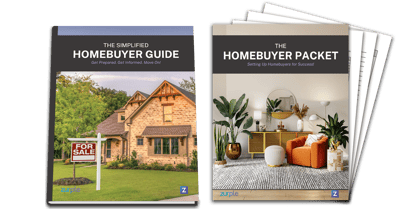Considering using Facebook ads to promote your real estate website, blog or listing but have no idea how to get started? You’re in the right place.
Boosting is the simplest form of Facebook paid promotion available - so it’s a great tool to explore if you’re just getting started. Today, I’m going to teach you affordable and effective way to drive your ideal leads to your site with Facebook’s “boost” tool. Before we get into the nitty gritty - use these instructions to set up your ad account: https://www.facebook.com/help/326113794144384.
How to Boost a Post on Facebook:
-
Choose your content: decide what you want to promote.
Here are a few ideas to get you started:
- a hot listing that you think will move fast;
- a great blog post that has a good potential to drive lots of web traffic;
- a lead-gated website resource that you want to share;
- news on a hot local topic;
- a video where you share advice on great things to see or do in your area;
- a cool photo of a local attraction.
Here’s a great example of a post that would be perfect for boosting:
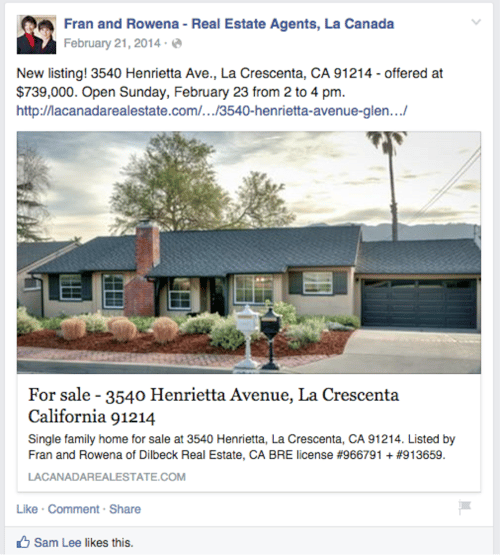
What’s good about it:
-- The post links to the agent site - all clicks will be redirected there.
-- There’s an obvious call to action (open house on Sunday).
-- The post contains enough information to get someone interested in the property
but not so much that they have no reason to click on the link to learn more.
-
Build your ad:
Building your ad is as simple as posting a status update – but you should put a little extra thought into your words, photos and link descriptions for best results.
Here’s an example. Check out these 2 versions of our promoted post – one that is not-so-optimized and one that is fully optimized.
Post that is not optimized for boost:
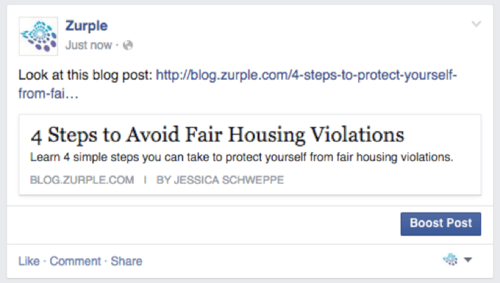
Where it falls short:
-- The post content is not very intriguing or descriptive.
-- There is no image.
-- The link title and description are repetitive and a bit boring.
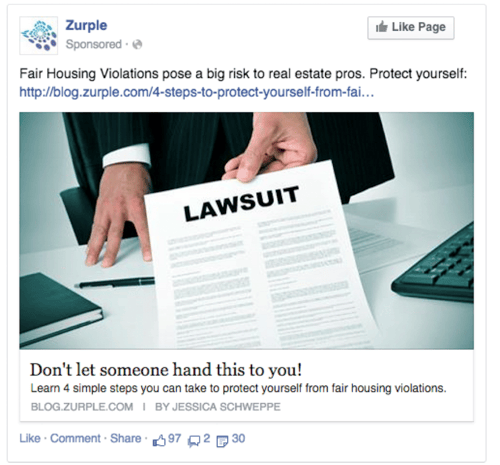
Why it works:
-- The post content evokes emotion and curiosity.
-- The image is direct and attention-grabbing.
-- The link title identifies that the reader is at risk.
-- The link description provides a solution to this potential problem.
-
Define your audience:
Once you’ve got a fully optimized status update on your page, it’s time to boost your post and define your audience.
First, click on the Boost button on the bottom right corner of your post:
Choose one of the preset audience options or click on “People you choose through targeting” to create a new one:
If you chose to create a new one – you’ll see the following options: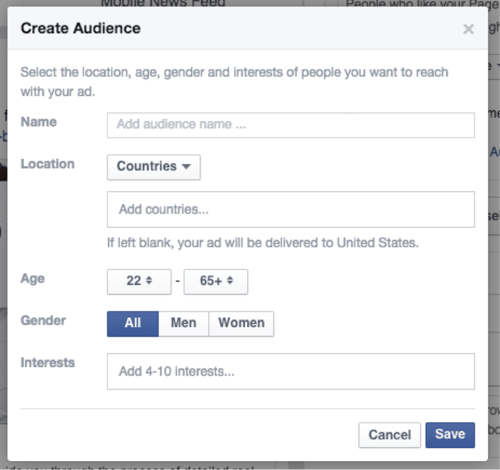
To target leads in a specific geographic area, select “Cities”, type your target city or cities into the location box:
Once you’re satisfied with the audience you’ve selected, it’s time to set your budget.
-
Set your budget & duration:
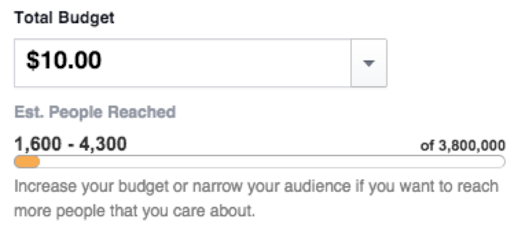
When you’re just starting out, I recommending boosting your posts for $5-$10 and setting your duration to 1 day to see what type of results you get. Once you’re more comfortable with the process and you’re consistently getting good results, you can increase your initial budget if desired. -
Analyze your results:
Once your ad has been running for a while, it’s time to analyze your results to make sure you’re getting the best return on your ad investment. To do so, click on the “View Results” button on the bottom right corner of your post.
Rather than give theoretical, let’s look at a real example of one of my promoted posts. In this case, I set a budget of $20 and a duration of 1 day.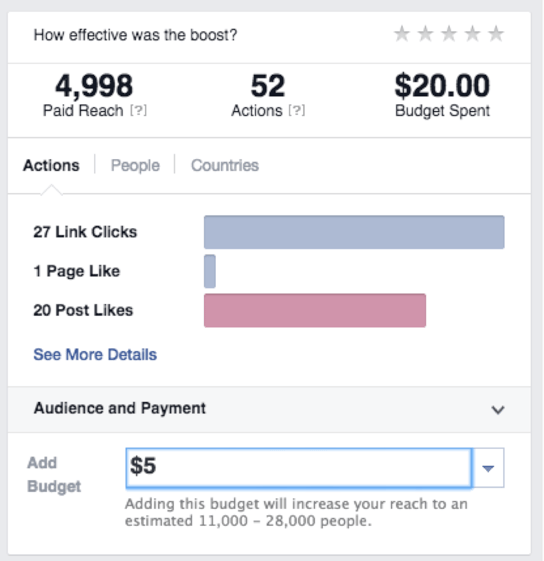
These results show me that:
-- I reached almost 5,000 people, meaning I made 5,000 impressions.
-- My post had a total of 52 actions (clicks, page likes, post likes, comments and shares combined).
-- Each click cost me .24 cents. (total cost / # of clicks).
If you click on the "People" tab, you'll see a demographic snapshot that illustrates what type of lead was most responsive to your ad. You can use this information to improve your ad targeting over time.
How do you determine if your ad performed well?
The acceptable cost per impression, click and lead will vary depending on two things - how targeted your audience is and the stage of the lead. For example, a form fill is more valuable, than a website click - thus may cost more.
Once you've run a few ads, you'll be able to aggregate your data and determine what your average cost is and you can use that to measure the effectiveness of your campaigns.
Still have questions about boosting posts? Check out this helpful Facebook tutorial: https://www.facebook.com/business/learn/facebook-page-boost-posts
>Boosting posts is a great way to test different content and see how your audience responds without breaking the bank. Use this tool to start generating some buzz around your brand and stay tuned to the Agent Success Blog for more ideas on how to effectively use Facebook marketing to grow your real estate business.
Ready to incorporate Facebook into your marketing plan?
Check out our free 2015 Ultimate Marketing Guide:

